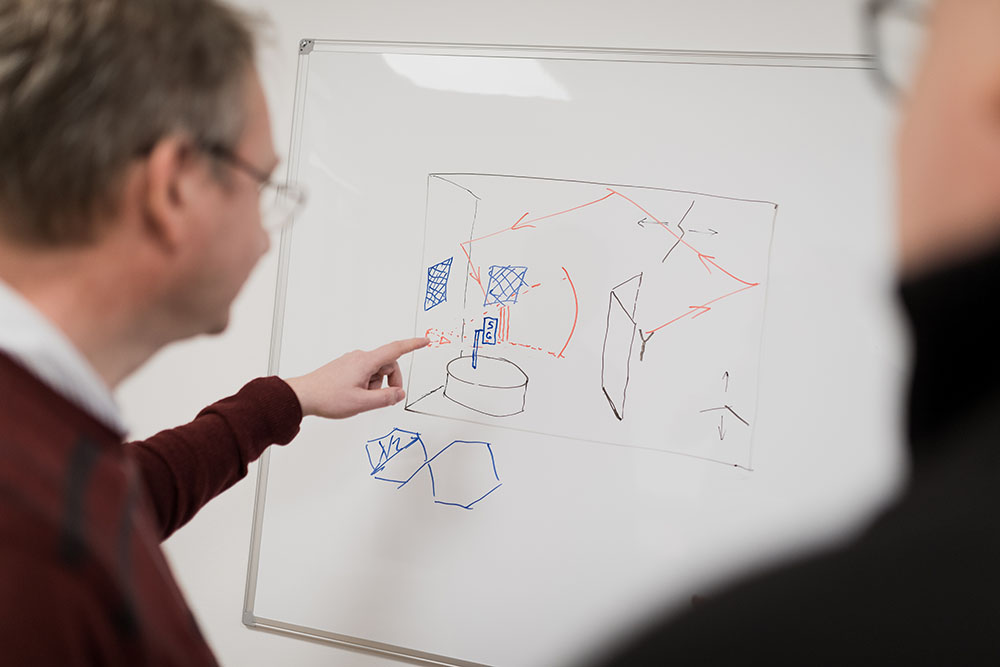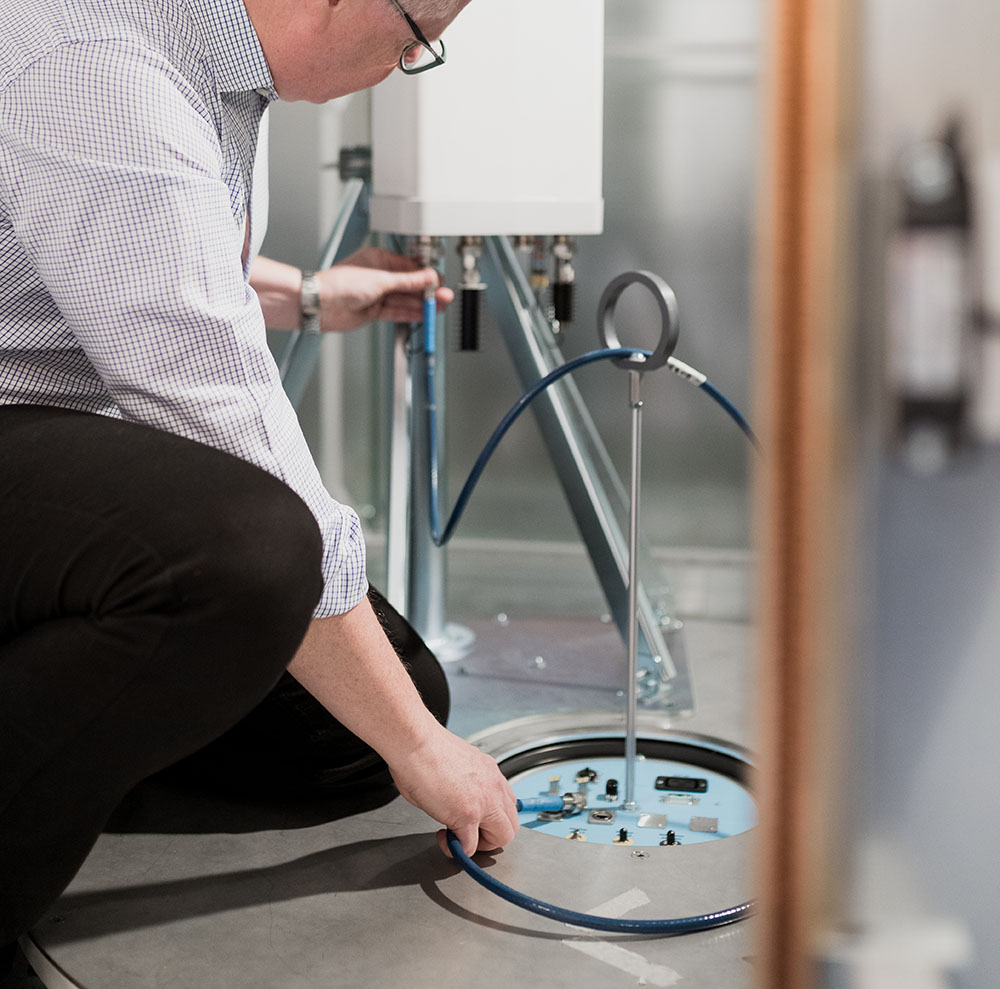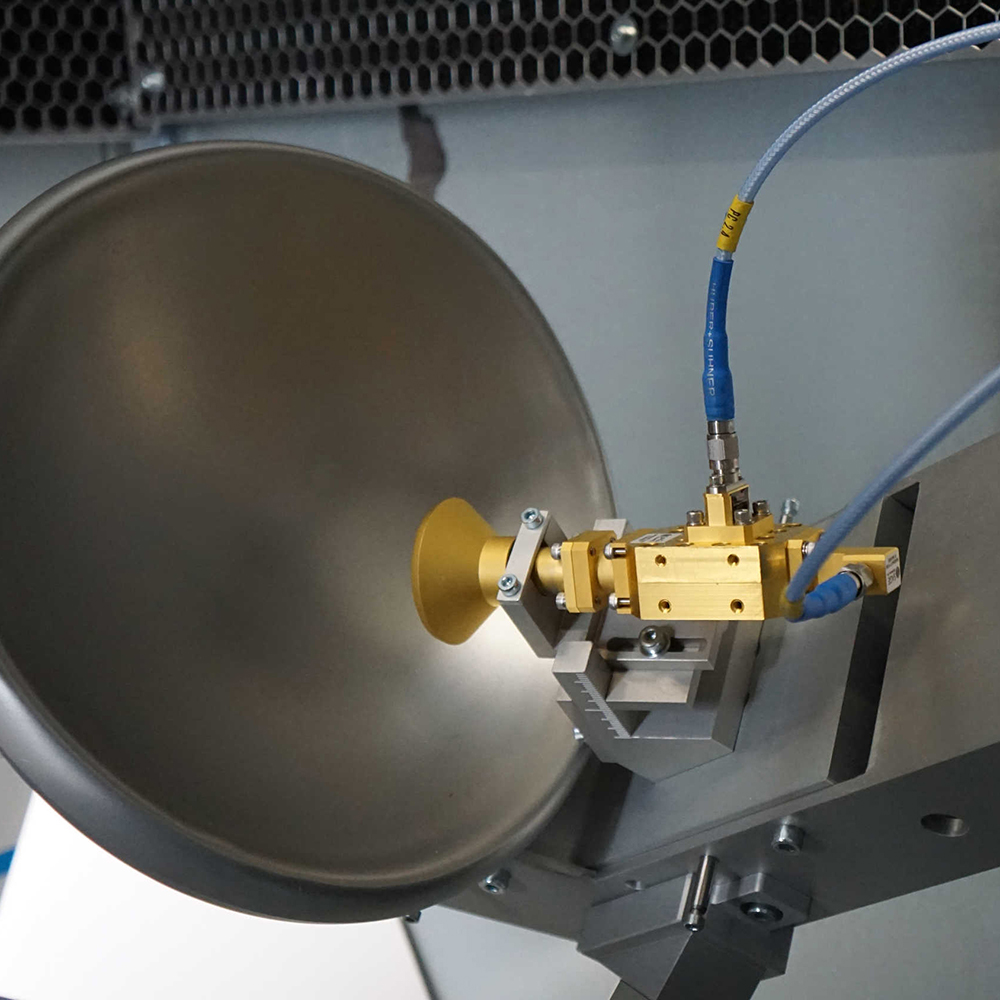Reverberation Chamber Technology
A reverberation chamber is essentially a large reflective enclosure, or cavity, that will resonate when
signals are introduced into it.
These resonances makes microwave signals reverberate, similar to how sound reverberate in an enclosure.
As signals bounce off the walls and objects in the chamber they interfere. This constructive and destructive
interference
of multiple signal reflections form cavity modes. A reverberation chamber adds special stirring functions to
move the points of constructive and destructive interference
around in the chamber. By proper stirring, multipath fading effects
can be distributed in a statistically well defined and repeatable way inside the chamber. This multipath
fading environment is particularly
appropriate to today's small, multi-purpose and high data rate wireless devices.


